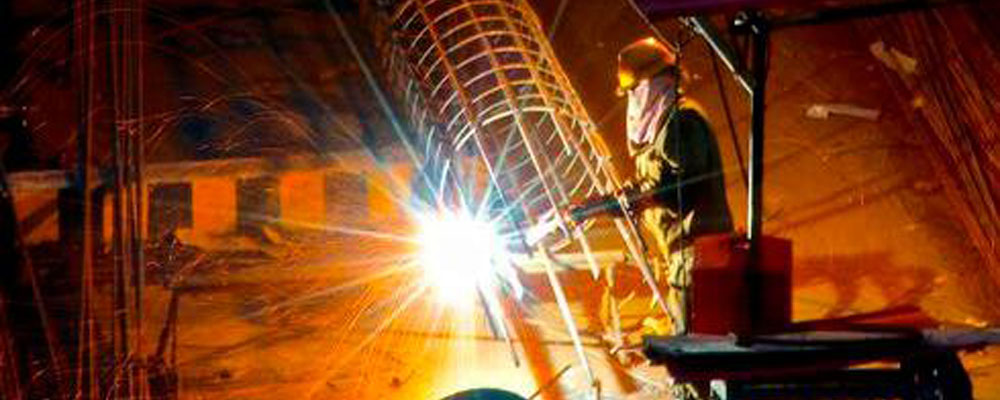Talking About The Horizontal Fixed Single Arc Welding Technology Of Plate Butt Joint Horizontal Fixe
1/2
Abstract: The single-sided welding of the plate-shaped test piece with horizontal fixed vertical position is difficult. It is difficult to operate due to the action of gravity of liquid metal and slag during welding, so that the front weld can form weld bead and slag, and the back side The weld seam forms defects such as depressions, incomplete penetration, and the like. This paper describes the welding method, welding process parameters, operating methods and precautions.
Foreword
With the rapid development of science and technology, in order to ensure welding quality, improve work efficiency, reduce labor intensity, and save construction costs, a series of high-quality, high-performance welding equipment and welding methods have emerged. However, manual welding rod arc welding is single-sided. Welding double-sided forming technology is the basic skill that every welding operator should master. In all kinds of welder technical assessment, grade examination, skill competition, plate butt manual arc welding has always been one of the important items for examination. It is an assessment of the technical level of the welder's operation, and it is also an important link to ensure the welding quality of the boiler, pressure vessel and pipeline. It is difficult in the hand arc welding operation skill, especially the welding of the butt joint of the plate, for each welder. In terms of it, it is the basis for maturity and deep development. Here, the superficial understanding of the double-sided forming technology of the single-sided welding of the plate butt joints is sorted out for your reference and discussion.

Overview of the method of operation
The plate-shaped test piece is fixed at the horizontal position and the manual arc is single-sided welding. It is difficult to operate. Due to the gravity of the liquid metal and slag during welding, it is easy to fall, so that the front weld seam forms a weld bead, slag inclusion, and back weld. A depression is formed. The welding of the bottom layer can be divided into two methods of continuous arc welding and arc welding. The arc-extinguishing method is relatively easy to master, including a one-click wear method and a two-click wear method. Generally, a one-click wear-through method and a two-click wear-through operation method can be used. The utility model has the advantages that the operation is more flexible, the temperature of the molten pool is easy to be controlled, the welding seam forming is convenient, the welding quality is good, and the quality is suitable for beginners. The disadvantage is that the pair has a large gap, the demand for the filling metal is large, and the welding rod dosage is increased, and the efficiency is increased. Reduced, the spatter is large when welding, the welder is easily burned, and the protection needs to be strengthened; the arc welding method is relatively small due to the small pair gap, the welding rod is used in a small amount, and the welding speed is relatively high, but the processing and group requirements of the test piece are more demanding. High, the welding current, the welding rod angle, the welding rod swing speed requirements are more stringent, the welder's skill requirements are higher, suitable for welders with certain practical experience and high skill level. Usually, in the skill competition or various types of examinations, the specifications of the welding rods are specified. Which method of operation is used, it can only adapt to the specifications of the welding rods used.
Preparation before welding
1. Test piece processing——Select two steel plates with material of 16Mn or 16MnR, planer cutting groove, the test piece specifications are: length 300mm, width 125mm, plate thickness 12mm, preparation V-groove, single bevel angle 30 °±2.5°, the groove surface should be straight, and the test piece is flat without deformation.
2. Cleaning of the test piece - use angle grinder, trowel, wire brush, abrasive cloth and other tools to clean the rust, scale and other dirt within 20mm on both sides of the groove until the metal luster is exposed.
3. Welding materials and welding power source - E5016 or E5017 welding rods are selected. The welding rod specifications are shown in the table. It must be dried at 350-400 °C for 1-2 hours before welding, and then placed in the electrode holder for use. The welding power source should use a DC welding machine, such as DC arc welding generator AX1-500, rectifying welding machine or inverter welding machine.
4. Test plate assembly and positioning welding - arc welding assembly, the initial weld end clearance is controlled within the range of 3-3.2mm, and the final weld end is between 4-4.5mm. The blunt edge is generally 0.5-1.5 mm. The wrong variable should be less than 1mm, and the anti-deformation angle is reserved for 3-5°. The welding end gap of the continuous arc welding is 2mm, and the final welding end is 2.5mm (see Figure 2, unit mm). The current during positioning welding should be slightly larger than that of the formal welding. The required welding rod is the same as the officially welded welding rod. The length of the positioning welding seam is 10-15mm. The welding should be firm, especially the final welding end, in order to prevent cracking during welding. , the wrong side, or due to heat shrinkage caused by the final weld end groove gap becomes small and affect the welding quality, must ensure the length and thickness of the positioning weld.
Contáctenos
¡Sienta por favor libre de dejarnos saber su información de la demanda, nos pondremos en contacto con usted cuanto antes, deseando cooperar con usted!





